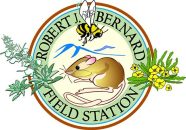Chan, Yvonne (1995)
A Comparison of the Bird Species Diversity, Avian Community Structure and Species Distributions in Fragments of Coastal Sage Scrub.
Bachelor of Arts, Pomona College, Biology.
Advisor: William Wirtz.
Urbanization has caused widespread fragmentation of native habitats in California. Relatively little is known about the effects of habitat fragmentation on avian community composition in an important native habitat, coastal sage scrub. This study examined two fragments, one small and one medium, within a suburban matrix and compared these to a large, relatively undisturbed site at the edge of the suburban area. This study had three goals: 1) To determine how size and habitat heterogeneity of coastal sage scrub fragments affected bird species diversity; 2) To determine how the distribution of trophic guilds and avian biomass changed with fragmentation; 3) To determine if species with low vagility were adversely affected by fragmentation. The point count census method was used to measure the avian community composition. I also collected structural vegetation data on habitat heterogeneity and foliage height diversity. I found bird species diversity increased with greater habitat heterogeneity but not with increasing area. I found that the percentage of insectivores comprising the bird community at each fragment did not relate with area. I did find changes in the distribution of biomass which related with area. A greater proportion of larger birds were found at the largest site and a greater proportion of smaller birds were found at the smallest site. I found that two species with low vagility that were dependent on resources within the fragments, the Wrentit and California Thrasher, were adversely affected by fragmentation. This study indicates that when choosing areas for avifaunal reserves in coastal sage scrub, habitat heterogeneity should be considered in addition to area in order to preserve species particularly vulnerable to habitat fragmentation.
